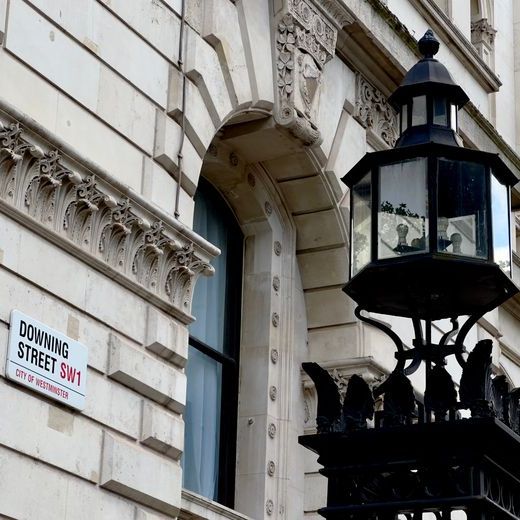We are now squarely in “ISA Season”, so you’ve likely read multiple articles about the most competitive ISA products in the market and how best to make the most of your ISA allowance before the end of the tax year. But what is an ISA, and why should you take advantage of it?
Tax-efficient saving
With standard savings accounts, any interest you make is taxed, so say, for example, you deposit £10,000 in a 12-month fixed-term savings account paying 1.3% interest. When it matures, you’ll make £130 in interest, which will be taxed up to 45% depending on your tax bracket, subject to the Personal Savings Allowance (PSA).
With an ISA, however, any interest you make on that will be tax-free. You can currently save £20,000 tax-free for the 25/26 financial year, with changes to the allowance yet to be confirmed for the 26/27 financial year.
The different types of ISA available
An ISA is a great way to make your savings go further, but there are several different types of ISAs to suit different saving styles. Depending on its access and withdrawal terms, you’ll need to select the best one for you. Below, we’ve summarised the different types to help you decide.
Cash ISA
The Cash ISA is one of the most well-known and straightforward to understand. Similar to other savings products, these can be fixed term, easy access or notice, and your interest rate will vary depending on what type of product you choose and the term you opt for.
To ensure your money’s protected up to £120,000, you should check that the provider you choose is a member of the Financial Services Compensation Scheme (FSCS). At OakNorth, we’re fully regulated, and your savings are FSCS-protected up to £120,000.
We offer easy access and fixed-rate cash ISA products with our fixed-rate ISAs ranging from 12-36 months. We also provide different access terms to suit your differing needs, making saving into an ISA easier to work into your schedule, depending on when you’ll need your money.
Junior ISA
For those under the age of 18 looking to start saving or for parents wanting to put some money away for their children, there’s the junior ISA.
It allows parents to lay the foundations for their child’s financial future by granting long-term tax-free savings, even if a child begins working. Junior ISAs are a great way to get children and teens thinking about saving from a young age and understanding interest rates. They can be either held in either cash or stocks and shares.
Stocks and shares ISA
If you’re looking for a longer-term savings product and aren’t afraid to take some risk, then a stocks and shares ISA offers an alternative way to grow your savings.
With this ISA, your money is invested into the stock market, so there’s the potential to earn bigger returns, but your capital is at risk, and your investments can also go down in value. This product is usually better suited to those happy to keep their money locked away for longer, as performance tends to be better over the long term. This is because investing over an extended period allows you to see out any market dips.
Help-to-buy ISA
A help-to-buy ISA is no longer available to new customers, but those who already have one can continue to save with it. An attractive option for first-time buyers, the help-to-buy ISA is a government scheme designed to help first-time buyers get on the property ladder.
You can deposit a maximum of £200 each month, and each year the government will top up 25% of your savings up to a maximum of £3,000, so you would need to save £12,000 into your account to receive the total maximum bonus. You will still earn any interest your account offers simultaneously, so a help-to-buy ISA can be a faster way to boost your savings.
To qualify, you must be a first-time buyer, not own a property anywhere else, must intend to live in the property, and the purchase price can’t exceed £250,000 (or £450,000 in London). You must also buy a new-build property with this government scheme.
Lifetime ISA
The Lifetime ISA was launched in April 2017 and replaced the Help to Buy ISAs to help people save for their first home. The Lifetime ISA can also be used for retirement savings.
You can deposit up to £4,000 each year until you withdraw for your first house purchase or until you reach 50; however, you must make your first payment into your ISA before you turn 40. The government will add a 25% bonus to any savings you add to the account up to a maximum of £1,000 per year. You can hold cash or stocks and shares in your lifetime ISA or have a combination of both. The money can only be withdrawn from the LISA with the 25% bonus intact if you’re using it to buy your first home (up to £450,000), aged 60 or over, or if you’re terminally ill with less than 12 months to live.
Innovative Finance ISA
Finally, the Innovative Finance ISA (IFISA) lets savers use their tax-free ISA allowance while investing in peer-to-peer lending. An IFISA works by lending money to borrowers in return for a set amount of interest based on the time the saver is prepared to leave their money in the account. Similar to a stocks and shares ISA, it carries more risk but can also lead to higher returns in the long run, so it should only be an option for those prepared to potentially get back less than they put in. It is also worth noting that IFISAs are not protected under the FSCS scheme, so if you open an account with a provider that goes bust, you could lose all your investments.
Personal savings allowance (PSA)
It’s also worth mentioning the personal savings allowance and its impact on the tax-free interest you could receive from ISAs. This was introduced in April 2016 and is a tax-free allowance that you can earn on your savings. Basic rate taxpayers can receive up to £1000 of savings income, and higher rate taxpayers will receive £500 of savings income without any tax being due. However, this PSA is not available for any savers who will be paying tax at an additional higher rate where the taxable income exceeds £150,000. For complete clarity, any interest you receive from an ISA does not count towards your personal savings allowance.
Given all these options, you must make sure you pick the right product for your needs. Do your research, compare the market, and find a product and provider that aligns with your savings goals.
Check out the OakNorth Easy Access Cash ISA and Fixed Rate Cash ISA to see how you can maximise tax-free interest on your savings.


